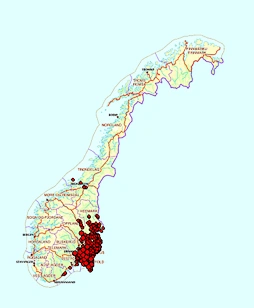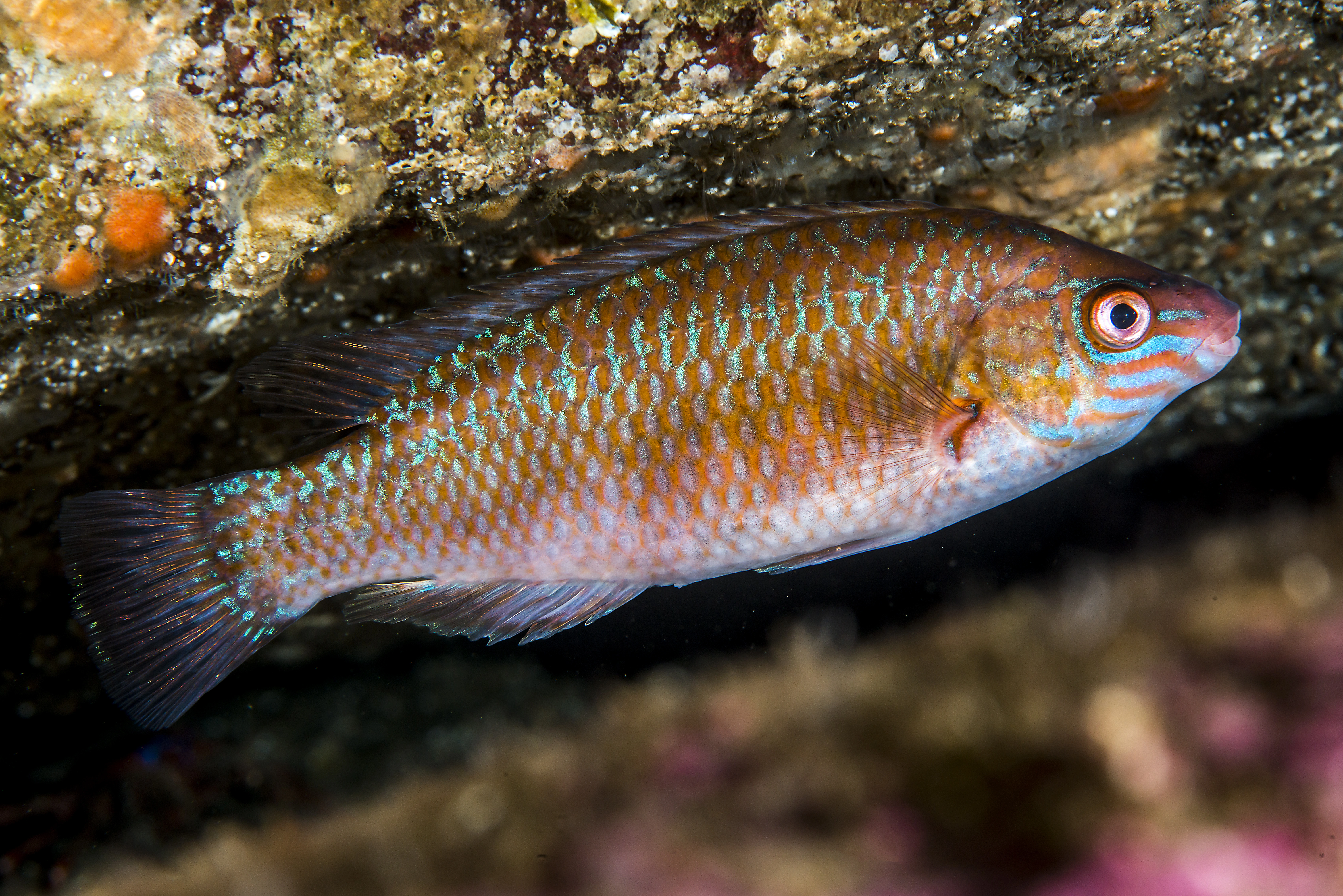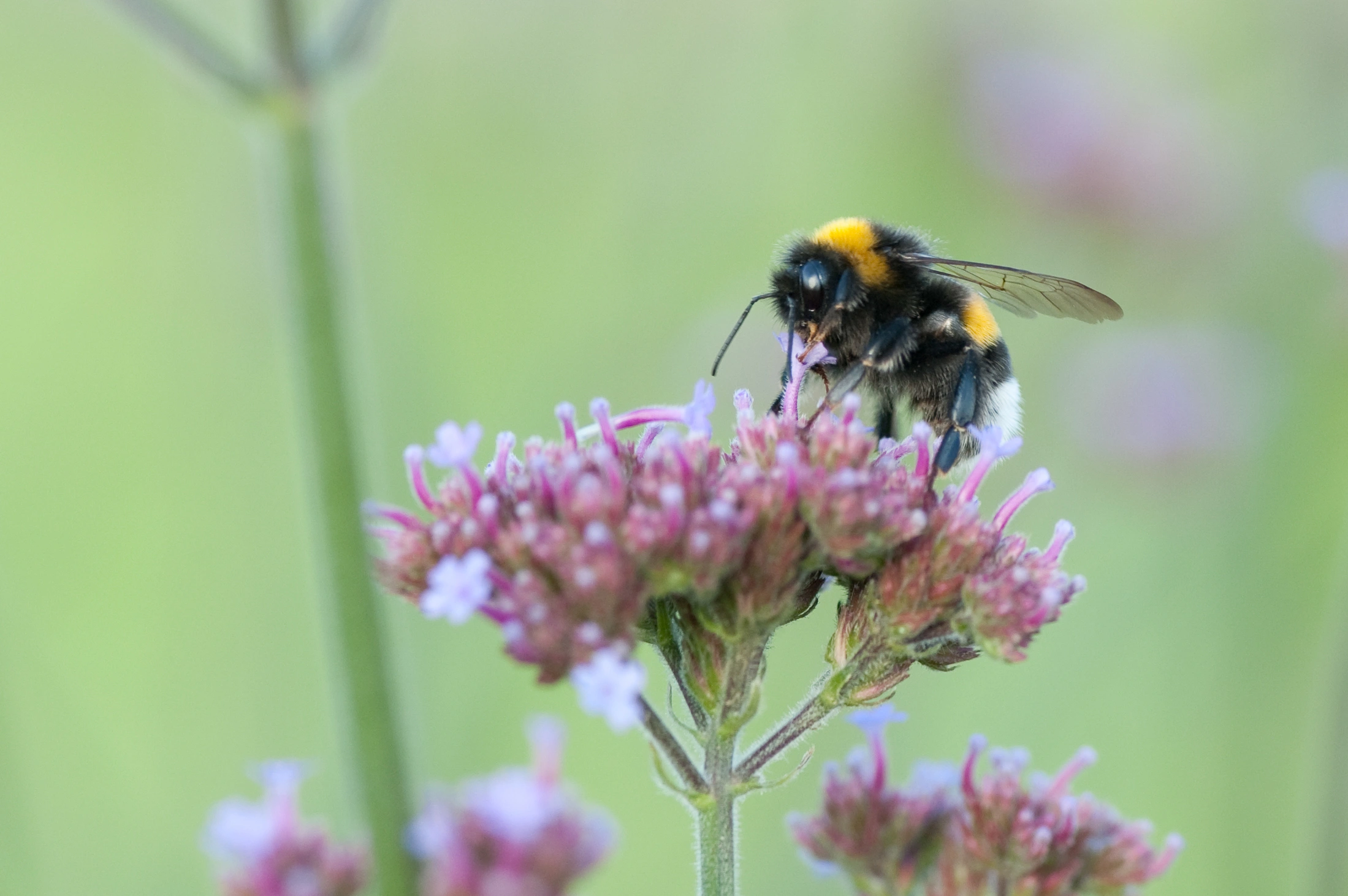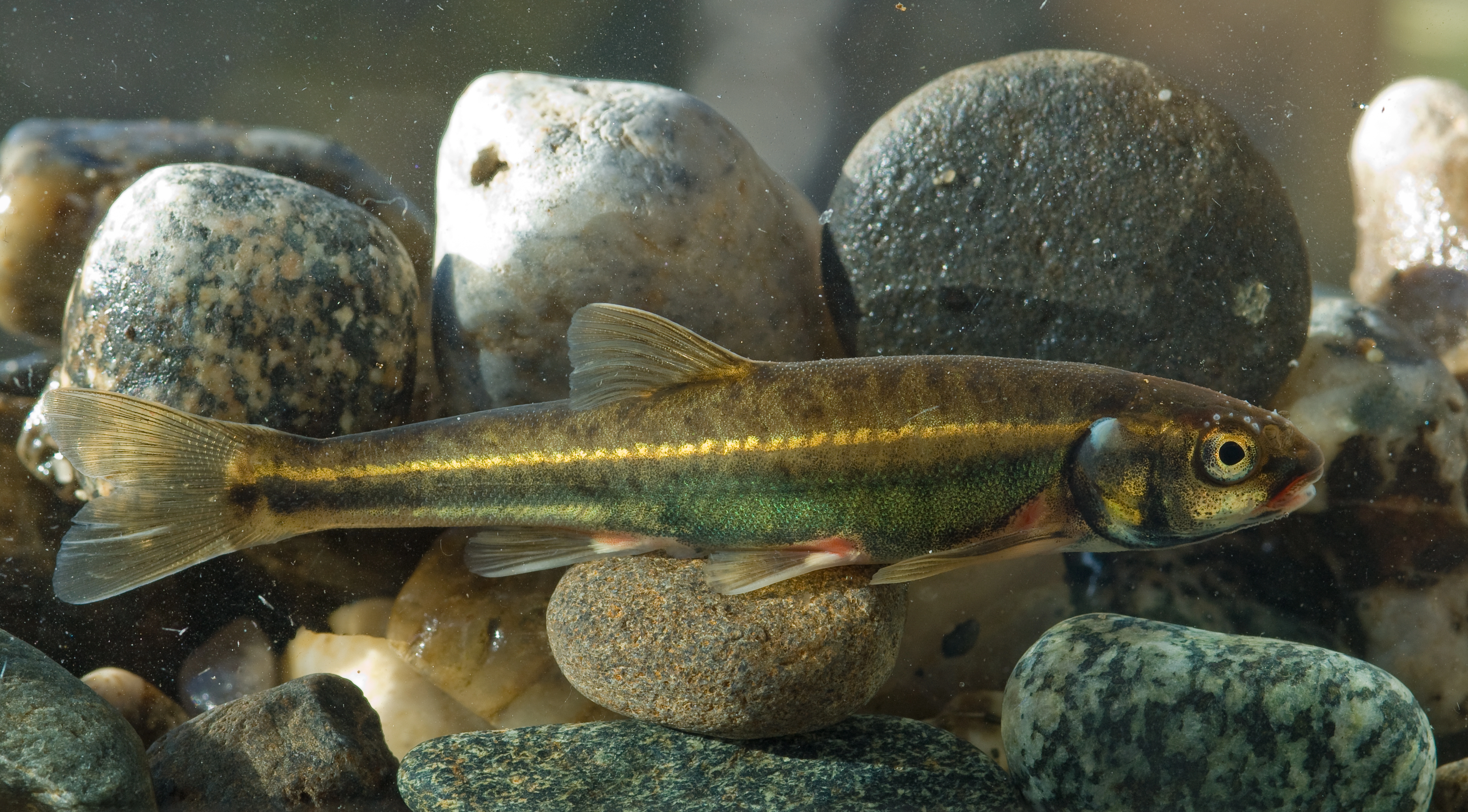Regionally alien species
Alien species do not necessarily come from far away. In the Norwegian Biodiversity Information Centre's new risk assessment 12 native species are also considered to be alien but only in certain parts of the country.
- Innhold
- Regionally alien freshwater fish
- Escaped wrasse – a risk?
- Regionally alien species which have been risk-assessed
"Regionally alien species are species that exist naturally in parts of Norway but which have been moved to new places in the country where they do not belong. In these areas such species are considered to be alien", explains Olga Hilmo, senior adviser in the Norwegian Biodiversity Information Centre.
As is the case with alien species, regionally alien species can constitute a risk for biodiversity in areas where they become established. In the Norwegian Biodiversity Information Centre's Alien Species List 2018, the third overview of alien species in Norway, regionally alien species are included for the first time. An assessment of regionally alien species' ecological risk is an important contribution to the knowledge foundation required, by the public administration authorities, to initiate possible countermeasures and priorities.
In total, eleven species are assessed and have been allocated to categories between low impact and severe impact. Fish and crustaceans dominate among the regionally alien species which are assessed; in addition, the buff-tailed bumblebee Bombus terrestris has been added to the Alien Species List. In common for all these species is that they have spread outside their natural habitat and area of distribution with the assistance of humans.
Regionally alien freshwater fish
Northern pike Esox lucius, minnow Phoxinus phoxinus and rudd Scardinius erythrophthalmus are among the fish that have been assessed as posing an extreme impact risk. Roach Rutilus rutilus follows closely behind in the category high impact risk.
Roach Rutilus rutilus and rudd Scardinius erythrophthalmus have popularly been used as live bait and have thus been spread to new areas. Northern pike Esox lucius has been deliberately introduced into new lakes to establish angling possibilities for large northern pike Esox lucius. In their new surroundings, fish that have been deliberately introduced can displace local, native species and disturb local ecosystems.
"These species in fact represent a greater threat than species we traditionally think of as alien", says Trygve Hesthagen, senior researcher at the Norwegian Institute for Nature Research and one of the experts that has assessed the group freshwater fish.
Hesthagen knows of several lakes where the introduced northern pike Esox lucius have extirpated natural fish stocks. The northern pike is in fact a very efficient predator that can make large inroads into the local trout stocks.
These regionally alien fish species have been continuously introduced to new lakes across the entire country. This activity has been in progress since the 1800s and continues to this day – despite the fact that moving fish is an environmental crime.
Roach Rutilus rutilus is naturally widespread in Østfold, Akershus and southern parts of Hedmark and Oppland, in lower Buskerud and at some locations in Vestfold. The species has been introduced to several lakes in Trøndelag county, as well as other places. All stocks of roach in Trøndelag are probably now extirpated with rotenone.
Escaped wrasse – a risk?
Marine fish species can in contrast to freshwater fish disperse over great distances. Increasing ocean temperatures can contribute to shifting the natural areas of species distribution steadily further north. In the meantime, some species receive more help along the way than others.
Wrasse caught in the wild, such as corkwing wrasse Symphodus melops and rockcook wrasse Centrolabrus exoletus are freighted in large numbers from southern Norway to various places, including Nordland. Wrasse are used to combat salmon fluke Gyrodactylus salaris in fish farms. However, as both species have their natural northern boundary along the coast of mid-Norway, both are regionally alien in the county. What effect do escapees of this species have on the local ecosystems along the coast of northern Norway?
"Wrasse can compete with local species for food and habitat, and potentially spread disease but are assessed, nonetheless, to have a small effect" says Elisabet Forsgren, the leader of the expert group for fish.
"At the same time it is important to keep up to date with what is happening, and to gather more knowledge, even for such low impact species. If one is going to do an intervention it is an advantage to begin as early as possible. When an alien species has managed to become established in an area, often it is both more difficult and more expensive to combat it", says Forsgren.
From the first individual being registered in Oslo in 1951, the buff-tailed bumblebee Bombus terrestris has become one of the most commonplace bumblebee species in Norway. This is due to a combination of natural dispersal and bumblebees (used for pollination) that have escaped from greenhouses.
The expert group has defined the buff-tailed bumblebee as regionally alien in Rogaland and the counties along the coast to Troms, where it has been assessed as having an extreme impact risk.
"The buff-tailed bumblebee is extremely competitive and defeats other bumblebee species in the competition for flowers and nesting sites. It is also extremely adaptable and has, furthermore, few natural enemies" says Frode Ødegaard, leader of the expert committee for insects.
Regionally alien species which have been risk-assessed
These are the regionally alien species on the Alien Species List which have been risk-assessed.
| English | Scientific | Risk category |
| Northern pike | Esox lucius | Extreme impact |
| Minnow | Phoxinus phoxinus | Extreme impact |
| Roach | Rutilus rutilus | High impact |
| Crucian carp | Carassius carassius | Low impact |
| Rudd | Scardinius erythrophthalmus | Extreme impact |
| Vendace | Coregonus albula | Low impact |
| Rockcook wrasse | Centrolabrus exoletus | Low impact |
| Corkwing wrasse | Symphodus melops | Low impact |
| Buff-tailed bumblebee | Bombus terrestris | Extreme impact |
| Opossum shrimp Mysis relicta (marin) | Mysis relicta | High impact |
| the shrimp Pallaseopsis quadrispinosa | Pallasiola quadrispinosa | Low impact |
| the calanoid copepod Heterocope borealis | Heterocope borealis | Low impact |
Minnow Phoxinus phoxinus



